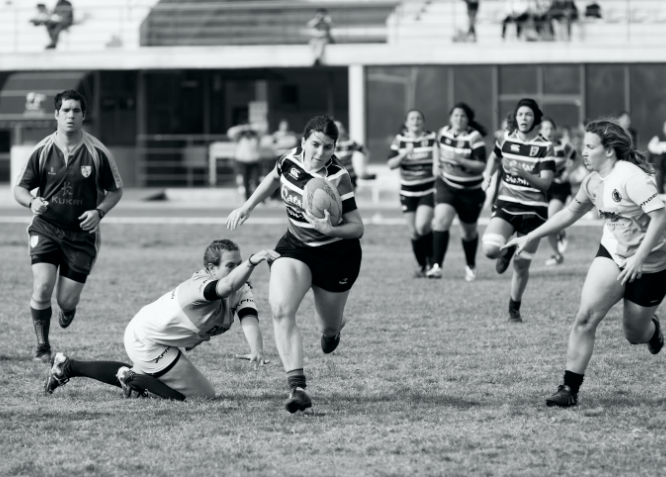Rugby union has long been considered a male-dominated sport, but the women’s game is rapidly gaining popularity and breaking down gender barriers. Women’s rugby has a rich history spanning over a century, overcoming societal stigma to carve out a legacy and pave the way for future generations. This article will explore the origins of women’s rugby, the progress made, and the bright future ahead as women rugby players continue to inspire change.
The Origins of Women’s Rugby
Women have been playing rugby union since the late 19th century, not long after the codification of the men’s game. The first recorded women’s match took place in 1887 between a team from Portora Royal School and Enniskillen Grammar School in Ireland. However, it would take almost 100 years before women’s rugby was formally organized and governed.
The first women’s club teams emerged in the 1960s and 1970s in France, the Netherlands, Canada, New Zealand, and the United Kingdom. On the international stage, the first Women’s Rugby World Cup was held in 1991 featuring 12 teams. Since then, the growth of the women’s game has skyrocketed. Today, there are over 2.7 million registered female rugby players worldwide in over 100 countries.
Breaking Down Barriers
Given rugby’s reputation as a rough, physically demanding sport, women rugby players have had to overcome many barriers regarding their right to play. Opposition initially came from sporting bodies who tried to ban or discourage women from participating. But thanks to the perseverance of pioneering players and advocates, these barriers were dismantled over time.
Attitudes gradually changed as women proved they could handle the rigors of rugby. One milestone was the 2009 vote to make women’s rugby union an Olympic event, debuting at the 2016 Rio Games. This helped legitimize women’s rugby and provided increased funding and exposure. Performance milestones like England’s 2014 Women’s Rugby World Cup victory further highlighted the skill and athleticism of female players.
Today, women’s rugby receives much greater recognition and support across all levels. From grassroots to elite competition, women are embraced as rugby players in their own right. However, pay equity and media coverage remain ongoing battles. Overall, women’s rugby continues to make strides while challenging misconceptions about women’s abilities and roles in sport.
Growth of women’s rugby union worldwide
| 1991 | 2022 | |
|---|---|---|
| Teams in Women’s World Cup | 12 | 16 |
| Registered female players | |N/A | 2.7 million |
| Countries with women’s rugby | Around 12 | Over 100 |
Building a Legacy
Women rugby pioneers have laid the foundations, but the current generation of players strive to take the sport to new heights. The popularity and participation rates for girl’s and women’s rugby are rapidly rising. Rugby’s values of teamwork, integrity, respect, discipline and sportsmanship resonate strongly with female players.
Stars like Portia Woodman, Emily Scarratt, and Sarah Hunter serve as inspirations at the top level. The growing professionalism in leagues like England’s Premier 15s and New Zealand’s Farah Palmer Cup provide a platform for elite talent development. There is also emphasis on getting more women coaches and officials involved.
At the grassroots level, initiatives like Rugby Canada’s Rookie Rugby program provide a fun, safe introduction to build the next generation. Women’s rugby is also being used as a vehicle for social empowerment. Organizations like Try for Change empower women from disadvantaged communities through rugby. Overall, women’s rugby culture promotes strength, solidarity and self-confidence for women everywhere.
Overall, it may be said, while barriers still exist, women’s rugby has proven it is here to stay. The partnerships between World Rugby and organizations like the International Olympic Committee provide governance and resources to fuel sustainable growth. Increased match coverage and promotion cultivates engaged, enthusiastic supporter bases for women’s leagues and competitions.
There is huge scope for participation and viewership to grow exponentially if women’s rugby maintains its current momentum. The goal is to make rugby a genuinely gender-neutral sport at all levels. The women helping shape rugby’s future are passionate about leaving a lasting legacy of inclusivity. They strive to create more opportunities for girls and women to discover rugby’s joy and enriching life lessons.
As women’s rugby continues to develop, the pioneers of the past will look on proudly at how new generations of empowered female players are carrying the game forward.
